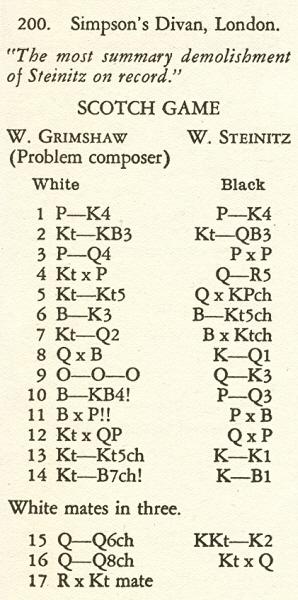
Edward Winter
(2011, with updates)

Page 115 of The Golden Treasury of Chess by Francis J. Wellmuth (Philadelphia, 1943)
Steinitz denied having lost such a game to Walter Grimshaw, describing it as bogus and a fraud. Below are the relevant texts from the International Chess Magazine, edited by Steinitz:
April 1891, page 118:

May 1891, pages 144-148:
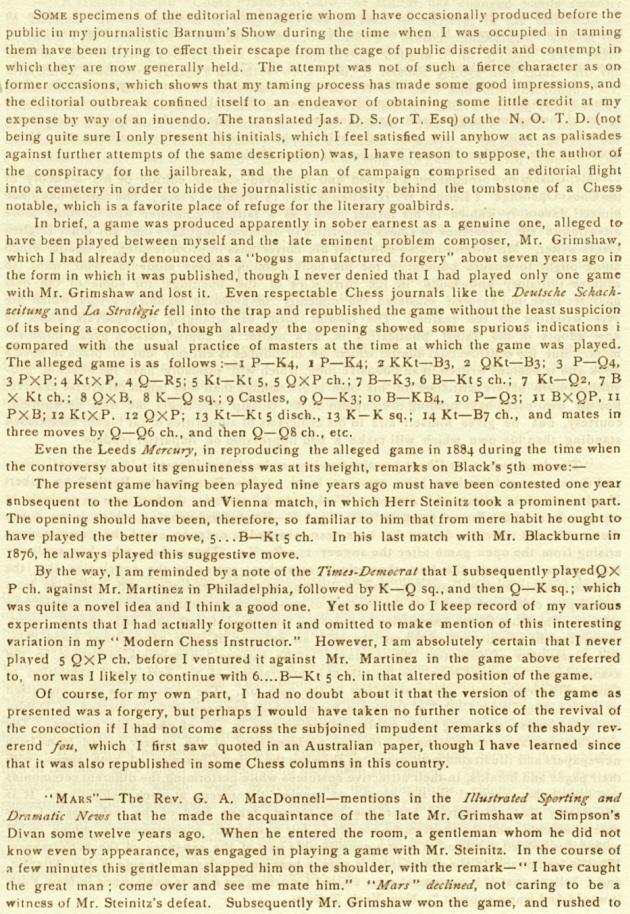
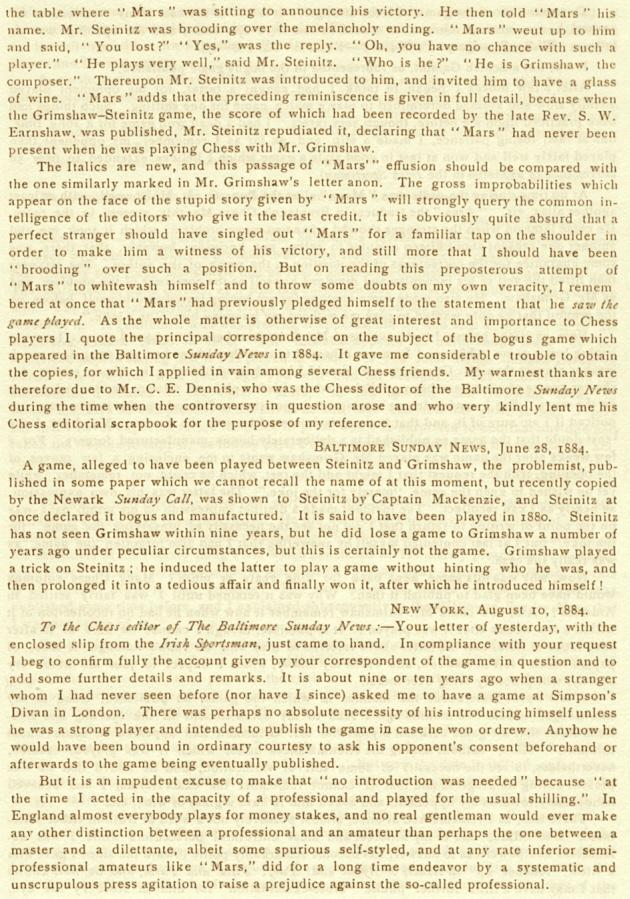
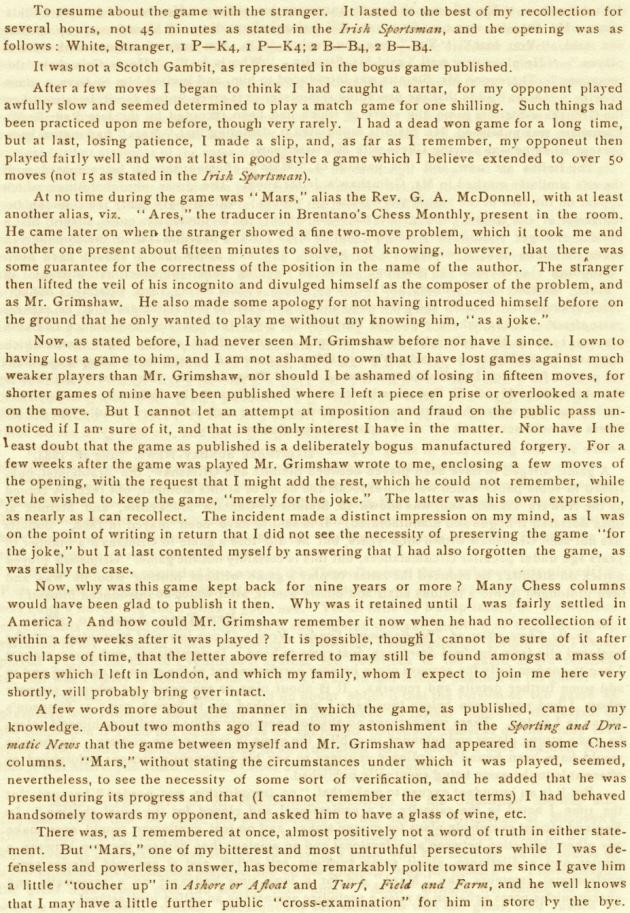

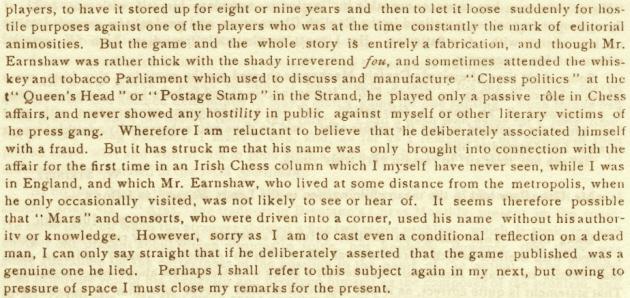
June 1891, pages 170-171:
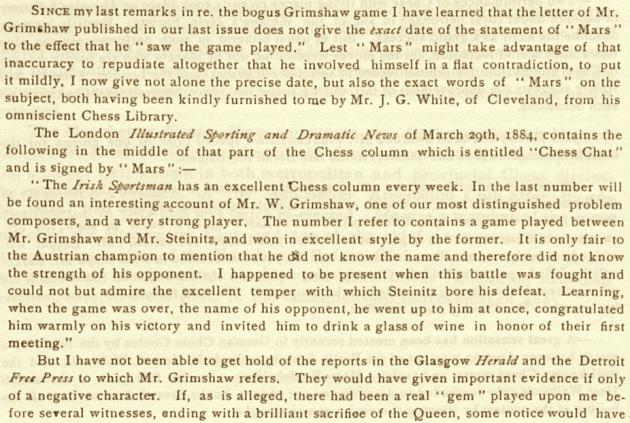

August 1891, pages 234-236:
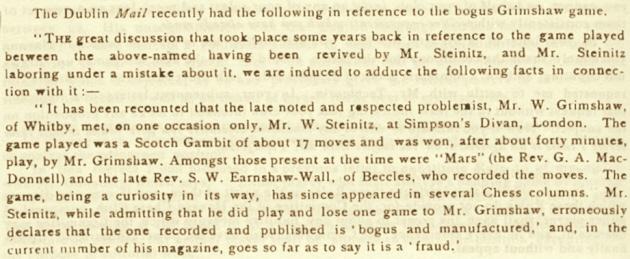
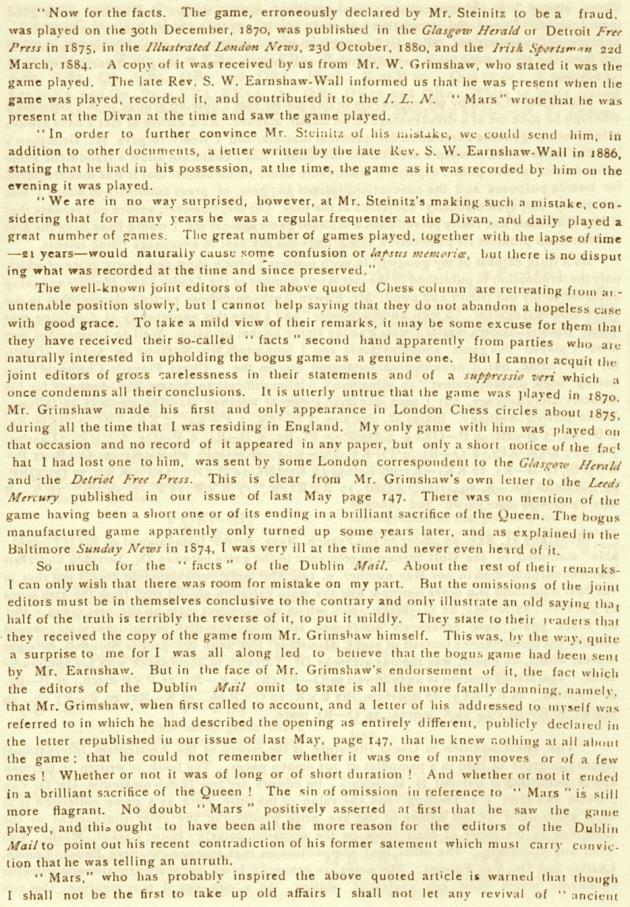
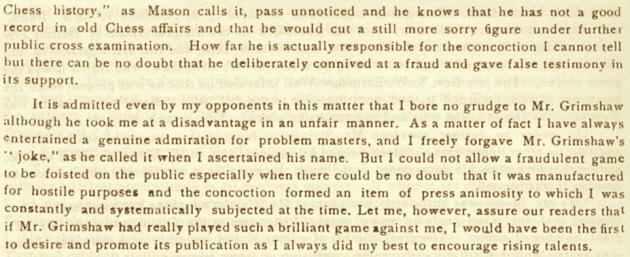
September 1891, page 266:

The game-score was given in item 298 of unit three of Napier’s Amenities and Background of Chess-Play (New York, 1935) with this introduction:
‘Steinitz is here seen trying a debatable defense. Such games are the master’s sketch-book – and his divining-rod.’
The game was dated ‘about 1872’, but when the item was reproduced on page 359 of the December 1952 Chess Review the date specified was 1878.
Fabrizio Zavatarelli (Milan, Italy) notes that the score was published on page 414 of the Illustrated London News, 23 October 1880, with no mention of Steinitz:
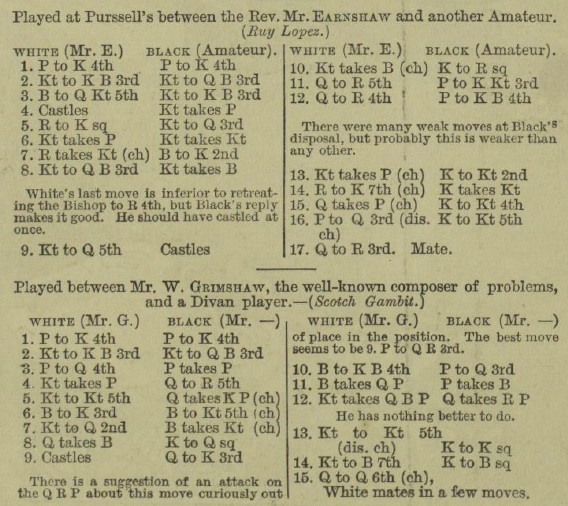
Mr Zavatarelli furthermore observes that the game under consideration was preceded by one involving Earnshaw, whose role in the affair is reported in our feature article.
(9347)
Michael McDowell (Westcliff-on-sea, England) sends a photograph, taken by Steve Mann, of Walter Grimshaw’s gravestone in the Larpool Lane Cemetery, Whitby, England:
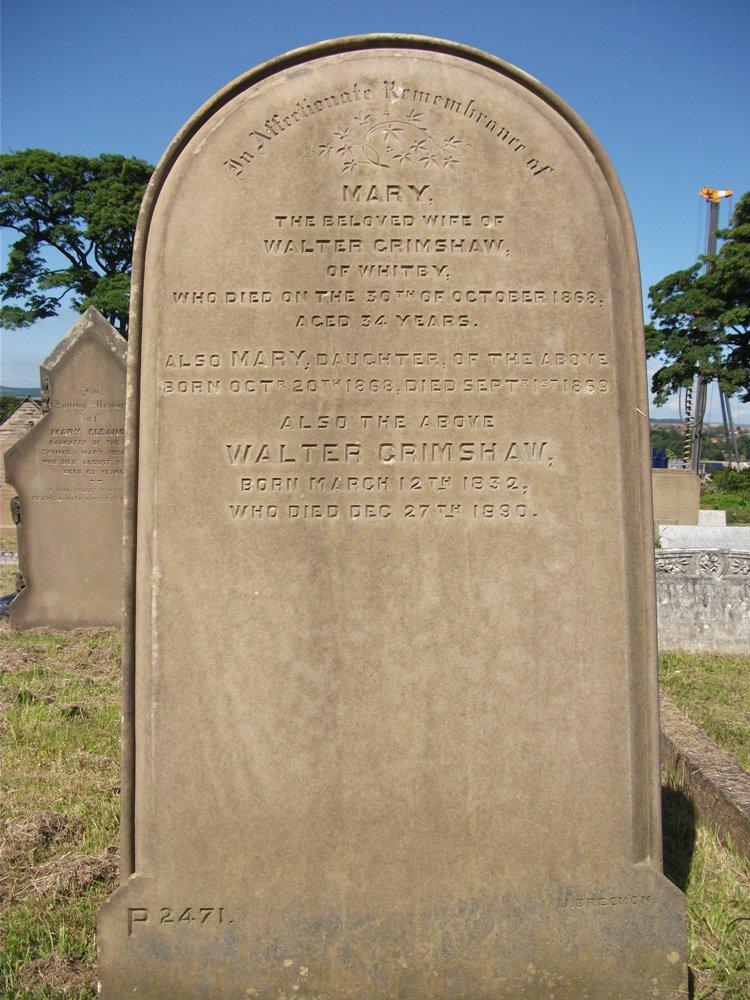
A note by Mr Mann:
‘The original interment was of Walter Grimshaw’s first wife, Mary, whom he had married in York (St Crux) on 10 October 1861. She died soon after giving birth to their second child, Mary, who died within a year. Earlier, Walter and Mary had had a son, Walter Edwin Grimshaw, who survived his father. The latter’s second wife was the widow Jane Trattles, of the ship-owning company Trattles. They married on 18 May 1878 at Whitby parish church.’
On 27 December 1890 Grimshaw committed suicide by cutting his throat with a razor. Mr McDowell has sent us the lengthy account published on page 5 of the Whitby Times, 2 January 1891.
The photograph referred to in the Whitby Times is reproduced below (the frontispiece to the January 1886 BCM):


A further photograph of Grimshaw was published opposite page 41 of the February 1891 BCM:
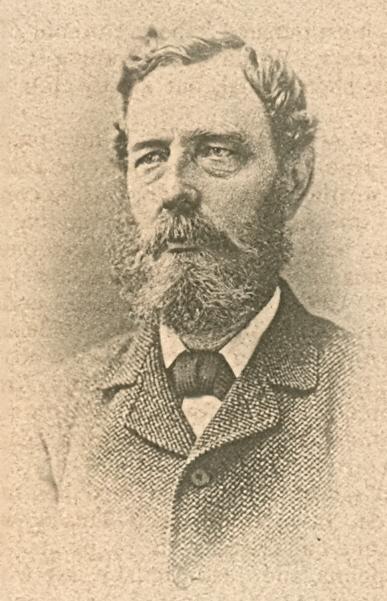
As regards the Grimshaw theme (reciprocal interferences between two pieces of unlike motion), Mr McDowell notes that Grimshaw’s famous problem first appeared in the Illustrated London News of 24 August 1850:
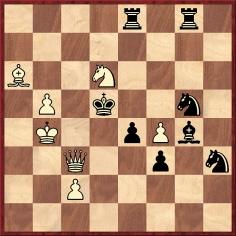
Our correspondent adds:
‘The first edition of the Oxford Companion to Chess (page 134) gives the correct publication year of the problem (1850), while the second edition (page 99) gets it wrong.’
We note the following in the entry on the Grimshaw theme on pages 172-173 of the Dictionnaire des échecs by F. Le Lionnais and E. Maget (Paris, 1967):
‘Le problème souche est attribué à Walter Grimshaw (mais il est en réalité de Brede qui avait fait apparaître, sans s’en rendre compte il est vrai, une “Interception Grimshaw”, en 1844, dans une variante secondaire. Grimshaw, en 1850, composa délibérément le premier problème sur ce thème).’
Henry E. Kidson wrote about Grimshaw in ‘Some reminiscences of a noted problem composer’ in the Yorkshire Weekly Post, an article which was reproduced on pages 38-39 of Lasker’s Chess Magazine, November-December 1906. Grimshaw and Kidson both appear in a photograph (Redcar, 1866) given in C.N. 5614.
(7271)
ChessBase has a custom of undiscerningly reproducing, with agreement, articles from the UK magazine CHESS, the latest case being a piece by Neil Hickman (CHESS, October 2024, pages 38-40). Much of it reads like an uncredited boiling-down of our feature article Grimshaw v Steinitz.
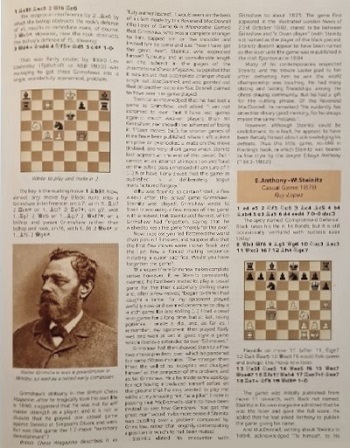
(12047)
Addition on 5 March 2025:
We thank Mr Hickman for informing us that a corrected version of his article has been published on pages 14-17 of the March 2025 edition of En Passant (Norfolk, England).
To the Chess Notes main page.
To the Archives for other feature articles.
Copyright: Edward Winter. All rights reserved.